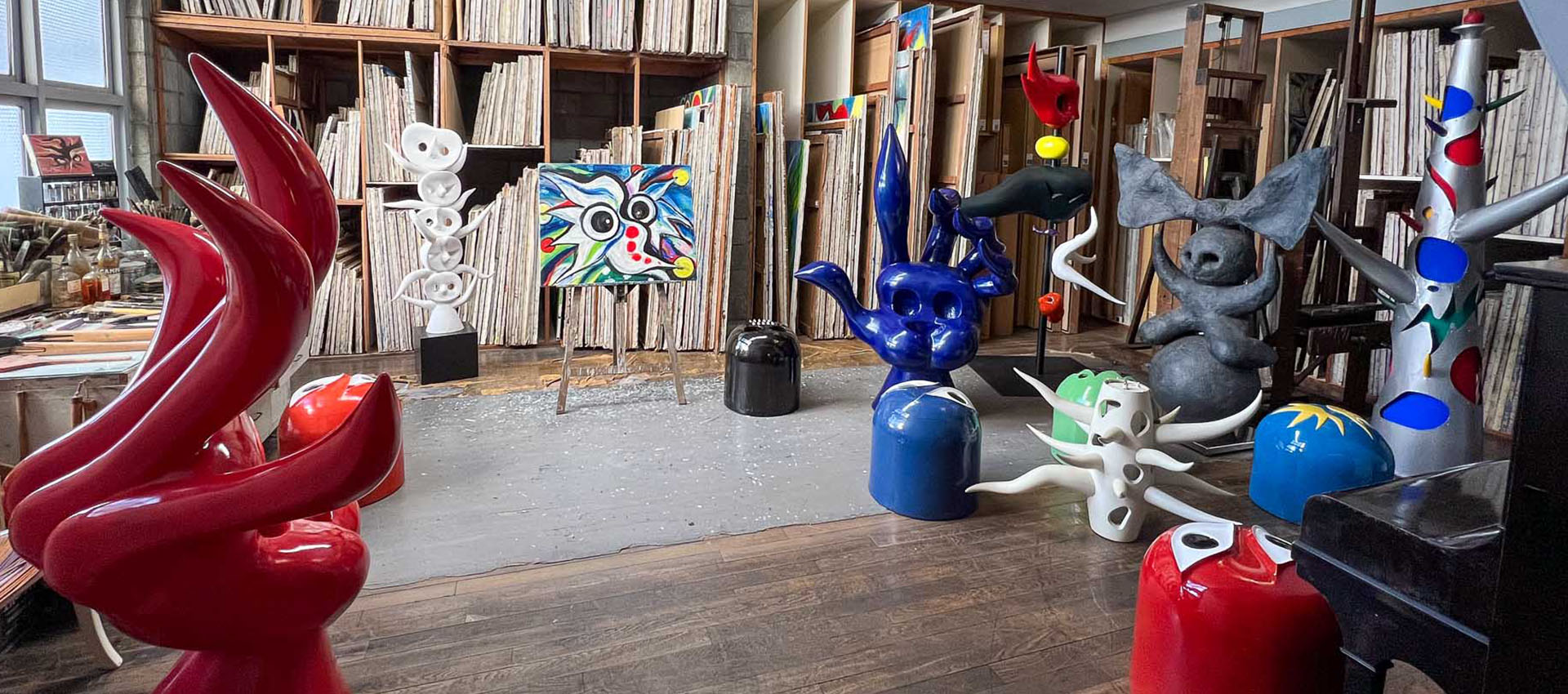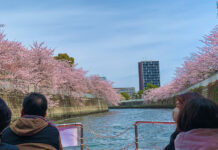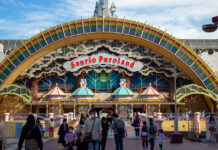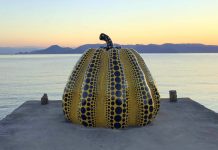If you’re a fan of avant-garde artwork, you’ve probably heard of Tarō Okamoto. One of the biggest names in Japanese contemporary art, his obscure paintings and sculptures are proudly featured in various spots around Japan and abroad. Even if you haven’t heard of him, a visit to the Tarō Okamoto Memorial Museum in Tokyo is a great way to learn a thing or two and bolster your cocktail party conversation arsenal.
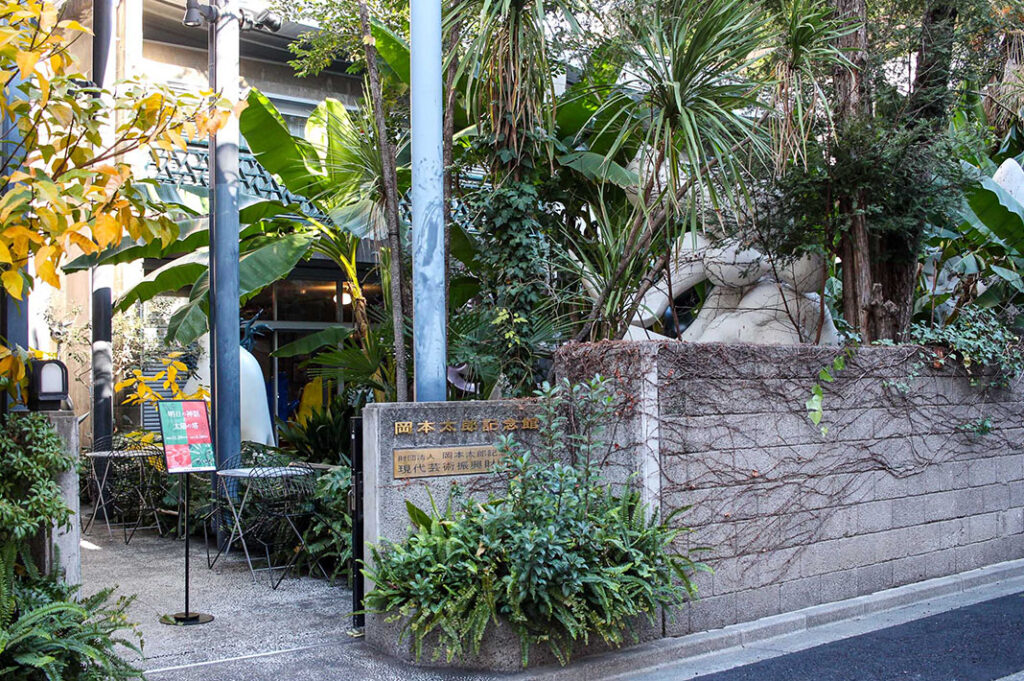
Tucked away in the backstreets of Minami Aoyama, a stone’s throw from busy Omotesandō, the museum occupies a building that served as Okamoto’s home and workshop for over 40 years. Giant palms hang over the fence but still afford glimpses of the sculptures that inhabit the garden. It was here in his 1950s modern home that Okamoto conceptualised and created his most famous pieces, including the famous “Tower of the Sun” in Osaka.
Okamoto’s final wish was that his home and studio be turned into a memorial museum, so his work could be remembered and enjoyed into the future, perhaps inspiring a new generation of artists.
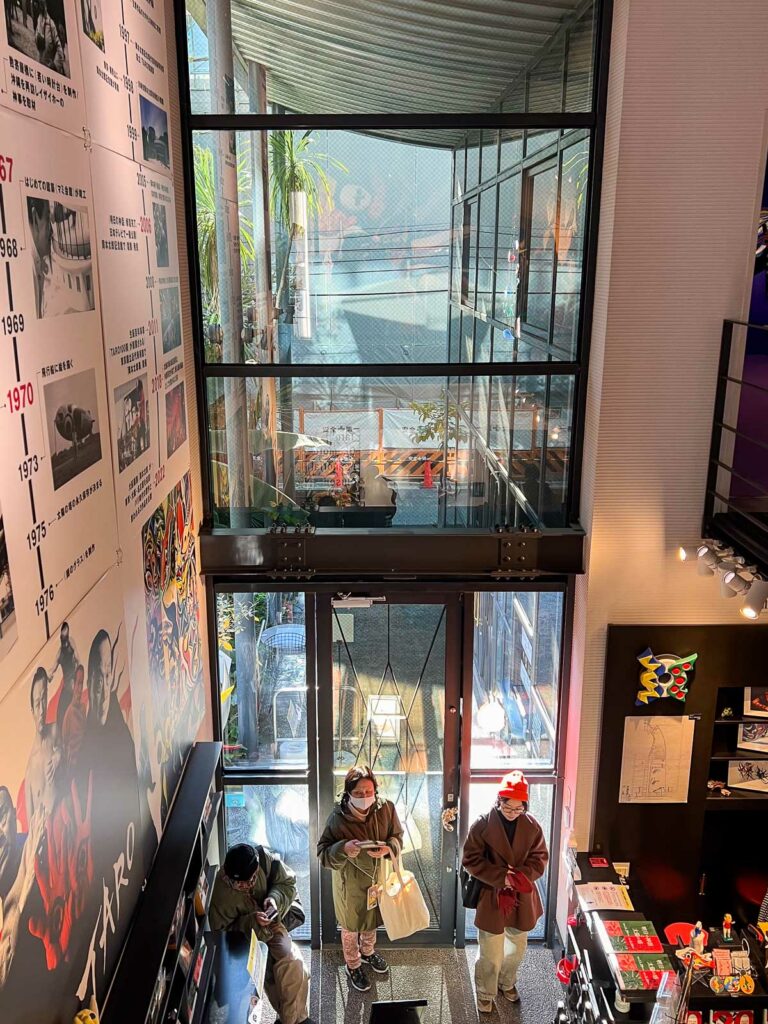
Who was Tarō Okamoto?
The wall inside the entrance depicts a timeline of Okamoto’s life from his birth in 1911 to his passing in 1996. It shows the young man in Paris who attended the Sorbonne, honed his talent and rubbed shoulders with prolific artists including Pablo Picasso — ever heard of him? It briefly mentions his World War 2 military service from 1942-1946, which included a stint as a prisoner of war, but quickly moves on to highlight his subsequent career achievements.
Like many after the war, Tarō had to start afresh as he lost everything in the air-raid bombings of Tokyo. He soon began to create, discuss, and write about art, fostering a community of like-minded people and steadily finding fame in the 1950s. From then on, he created many vibrant public works including murals and sculptures around Japan and abroad.
Okamoto’s style is abstract and surrealist, but is also influenced by primitive Japanese Jōmon ceramics as well as elements of Mexican art.
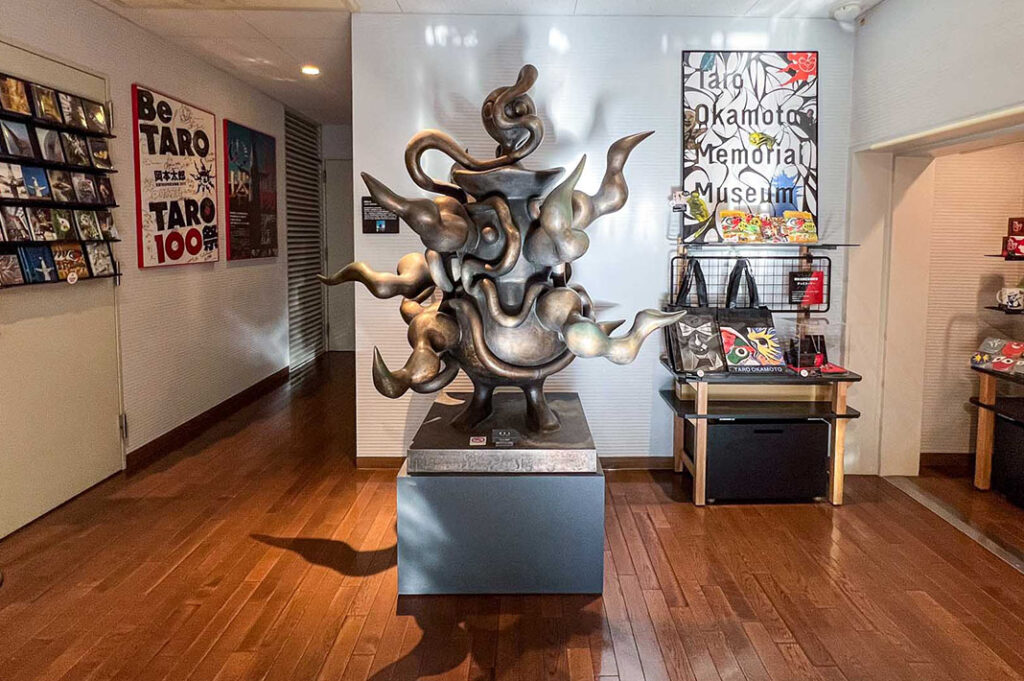
Exploring the Tarō Okamoto Museum
The ground floor of the museum is home to the gift shop, salon, studio, and garden. Hold onto your entry ticket as it allows you to move between the indoor and outdoor spaces.
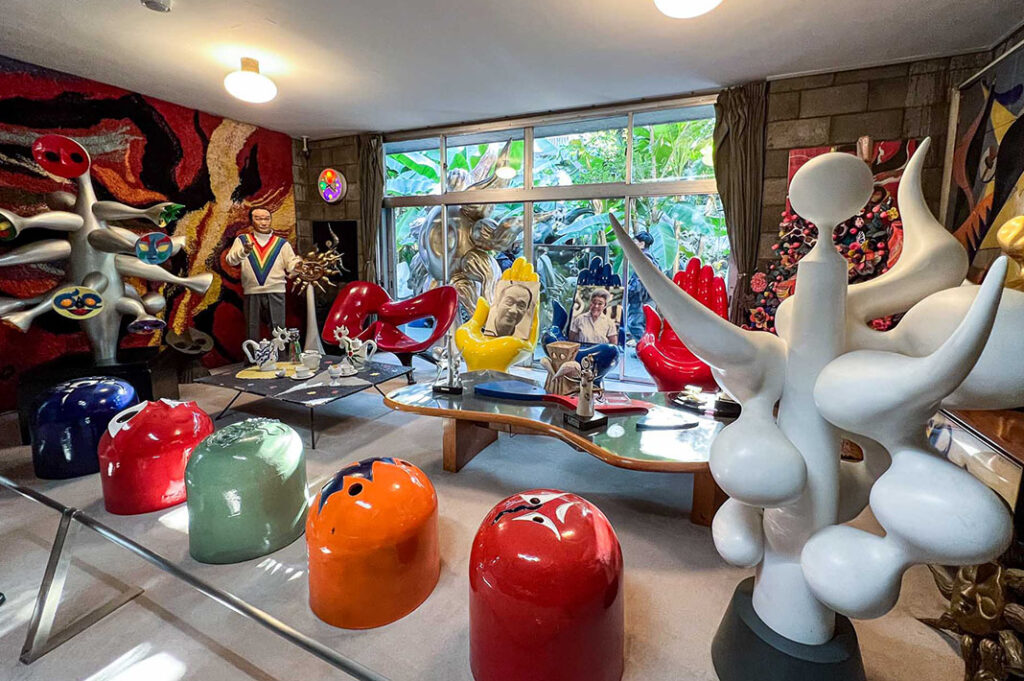
To the right of the entrance you’ll find the salon, a space once used as a reception room. It features garden views and brightly coloured furniture and art pieces, most of which were created by Okamoto himself…including a life-sized Tarō Okamoto statue. The museum website explains that he actually submerged himself in silicone to create an exact replica. Now that’s commitment!
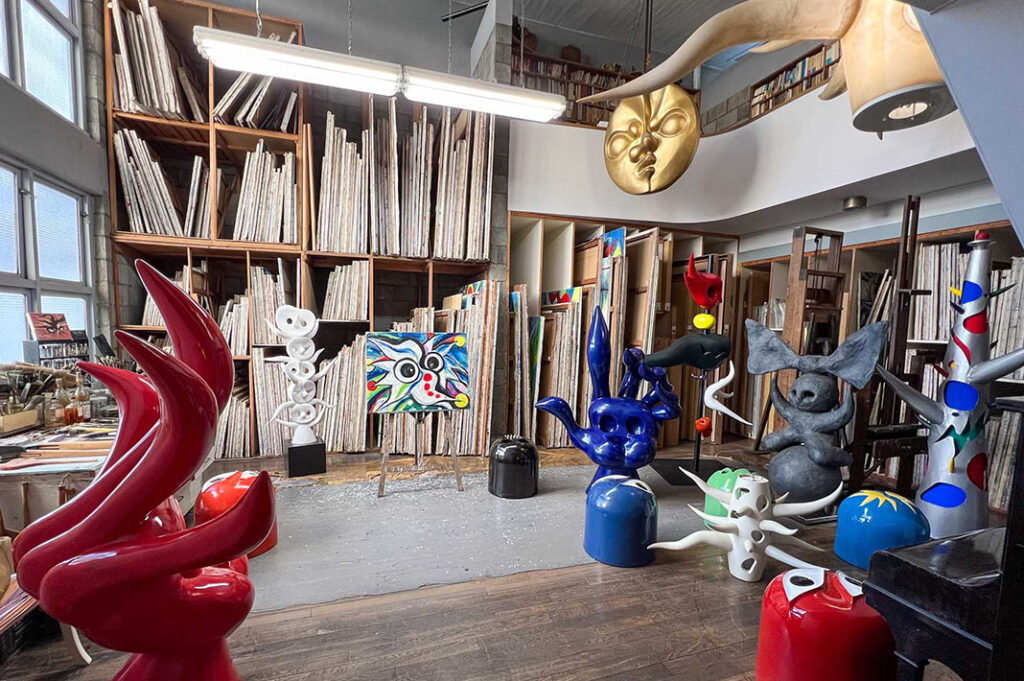
Beside the salon sits a light-filled studio where Okamoto would work on his creations. This room is said to be somewhat of a time capsule as it remains untouched from when he passed away in 1996. This, along with his statue and expressive portraits throughout the museum, gives the sense that Okamoto isn’t really gone.
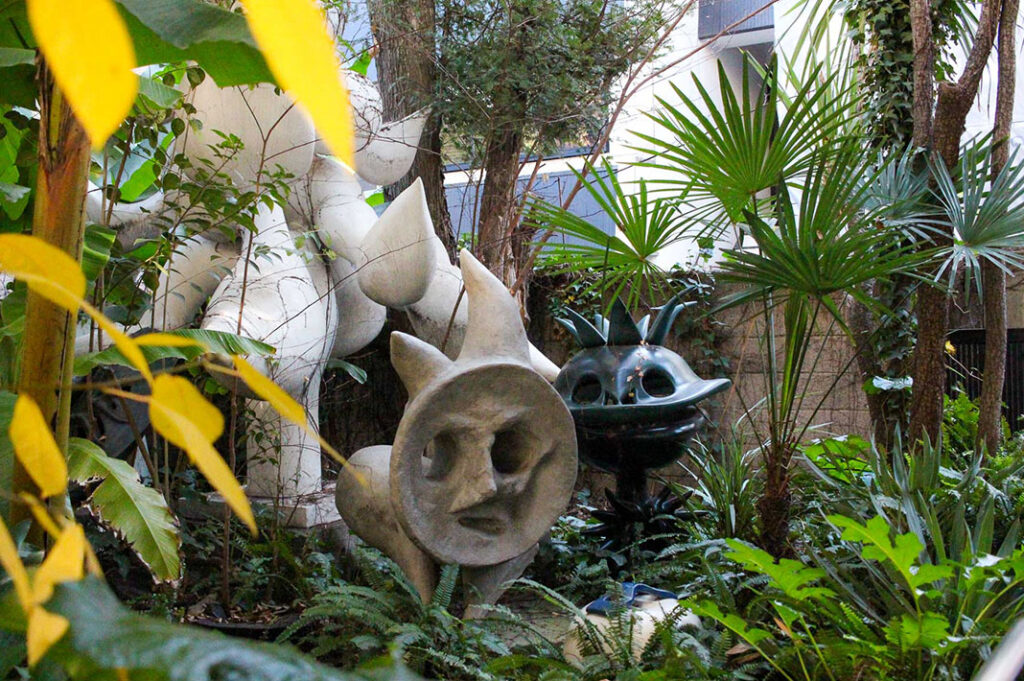
The sculpture garden
The front garden is decidedly not of your everyday Japanese variety. Rather, it’s filled with lush palms, ferns and even feijoa and nutmeg trees, creating a jungle aesthetic. It’s the perfect home for the creature sculptures that line the paths and peek out from behind leaves, and you’ll feel as though you’ve wandered into a surrealist primitive tribe.
Upstairs gallery
The second floor of the Tarō Okamoto Memorial Museum is home to two galleries that change with each exhibition.
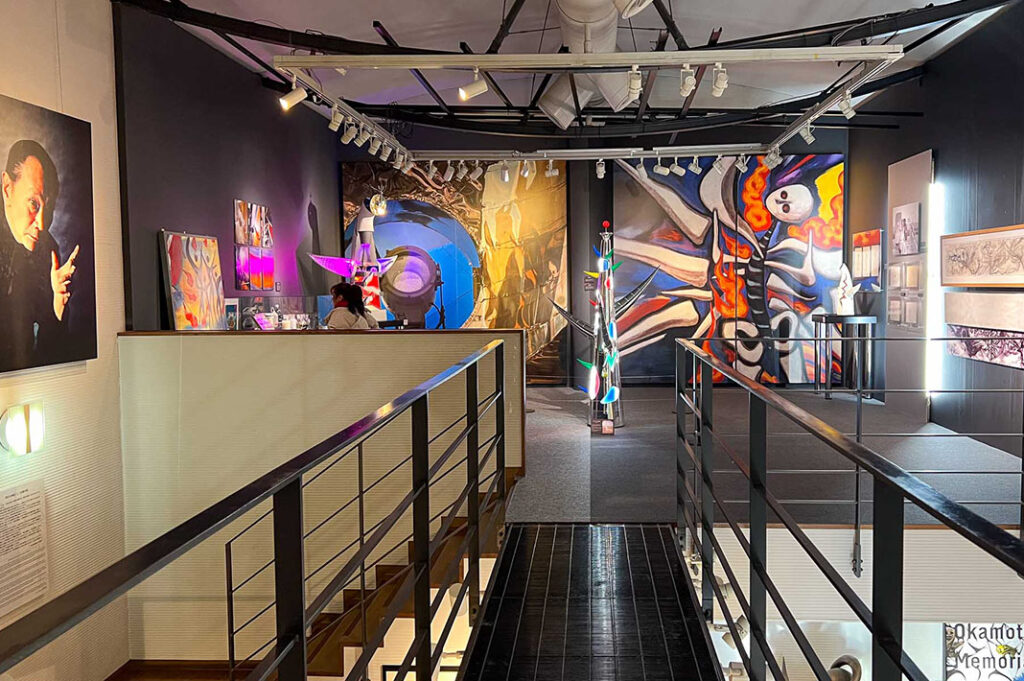

During our visit, we were delighted to find a scale model of the “Tower of the Sun,” including views of the interior. Another reason to visit Osaka soon.

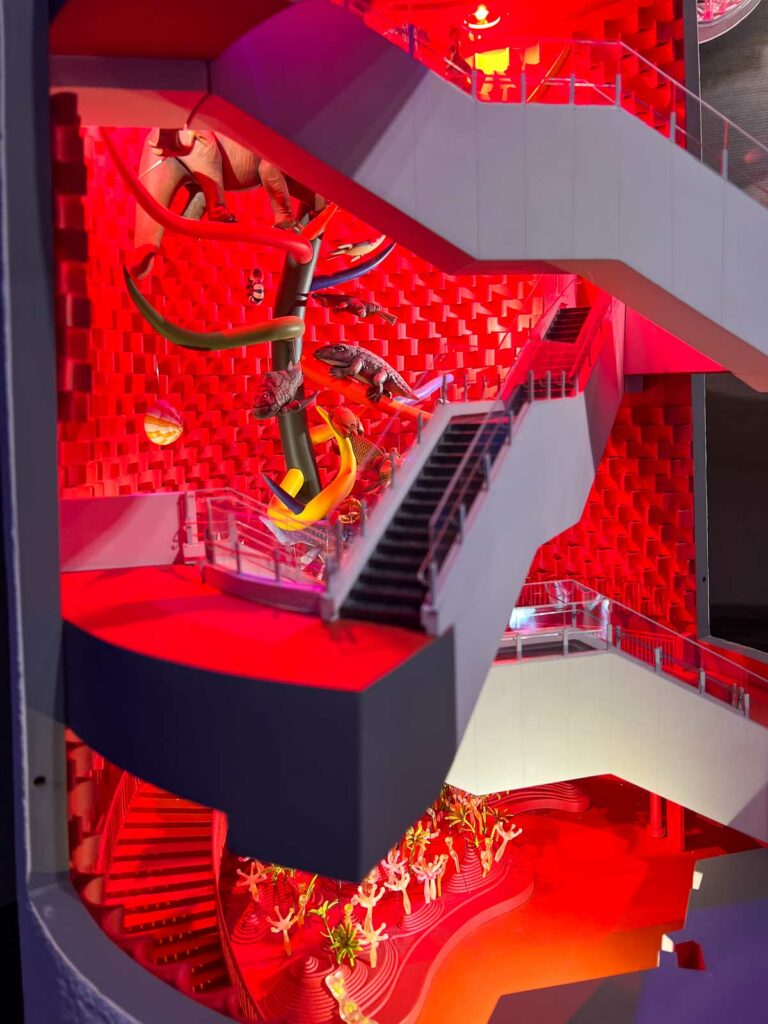
There weren’t many English explanations but the Google translate camera is a wonderful tool for translating the descriptions.
Exit through the gift shop
Before leaving, be sure to check out the museum shop. There are all kinds of books, tote bags, t-shirts, and knick-knacks. Or, if you loved the sculptures, there are small-scale models available to purchase, too.

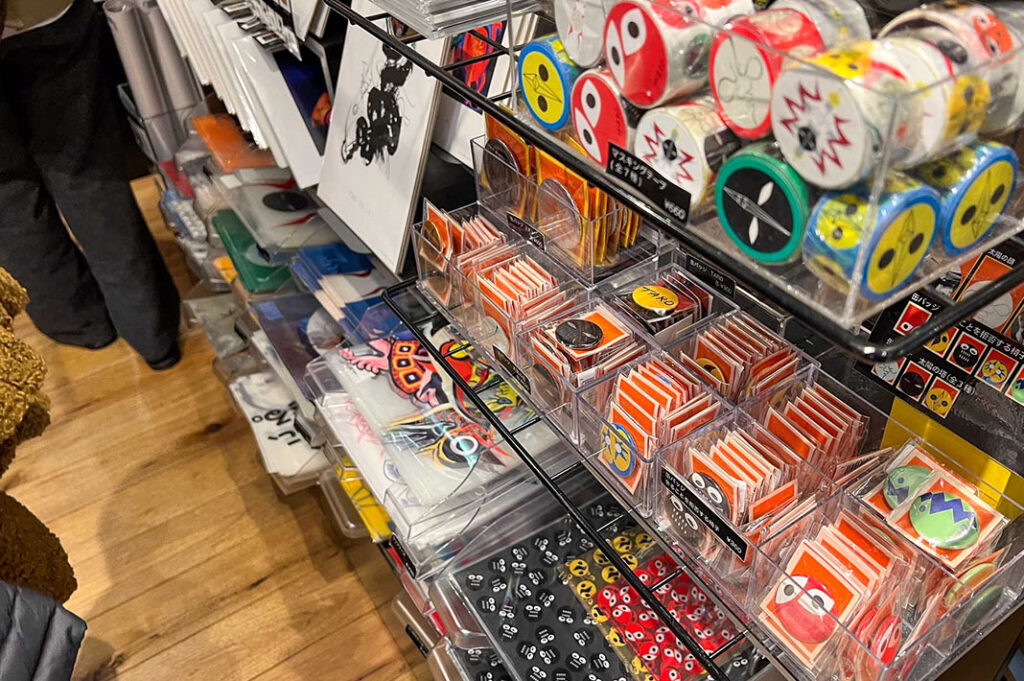
Tarō Okamoto pieces in the wild
A trip to Osaka to see “Tower of the Sun” is a great idea, but there are many more Okamoto pieces around if you know where to look.
Shibuya Station is home to a 30m-long mural called “Myth of Tomorrow” (1968) – a macabre depiction of the nuclear bombings of Hiroshima and Nagasaki. Funnily enough, this was actually painted in Mexico and went missing for 30 years, before being returned to Japan. You can find it in the Shibuya Mark City building near the Inokashira Line. The windows opposite the mural are also great for watching the Shibuya Scramble crossing.
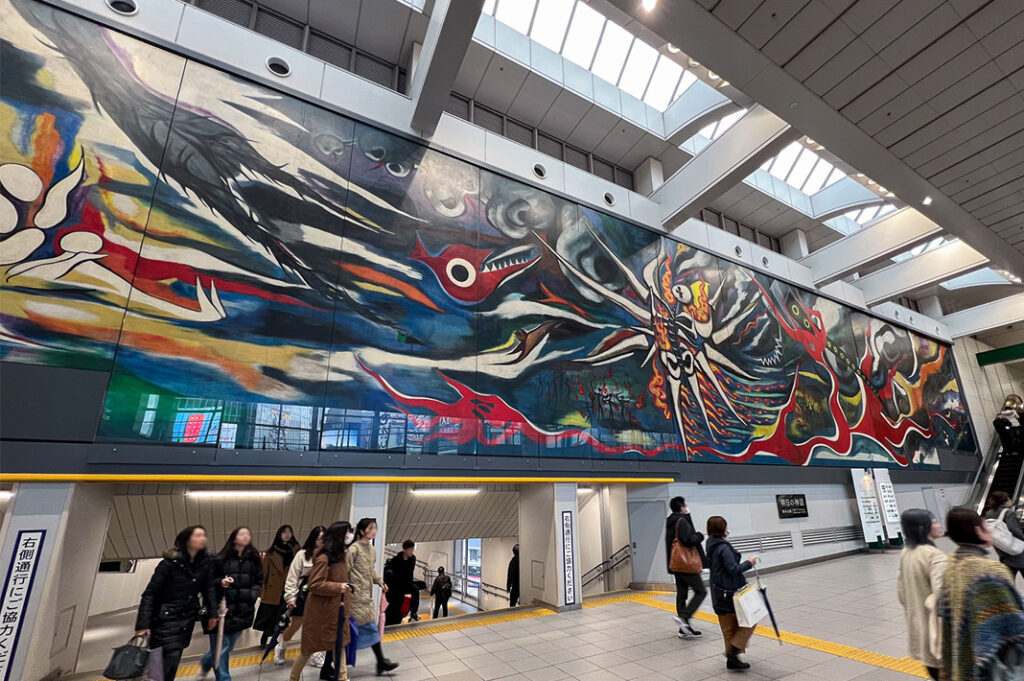
A short walk away in Aoyama, you’ll find the “Tree of Children” statue (1985). It’s located just near the Aoyama Farmers Market, so a weekend visit would prove very fruitful.
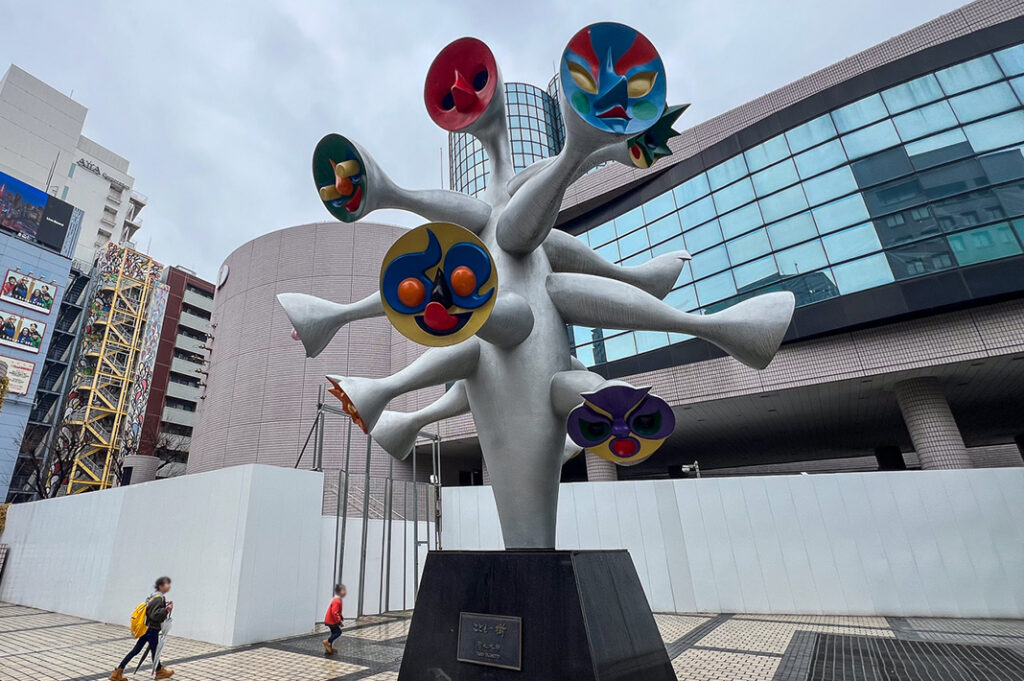
Lastly, if you find yourself in the ski resort town of Nozawa Onsen, keep an eye out for instances of Tarō Okamoto. An avid skier and hot spring enthusiast, Okamoto loved visiting this area. In fact, it’s his handwriting on the signs displayed around town for hot water (yu).
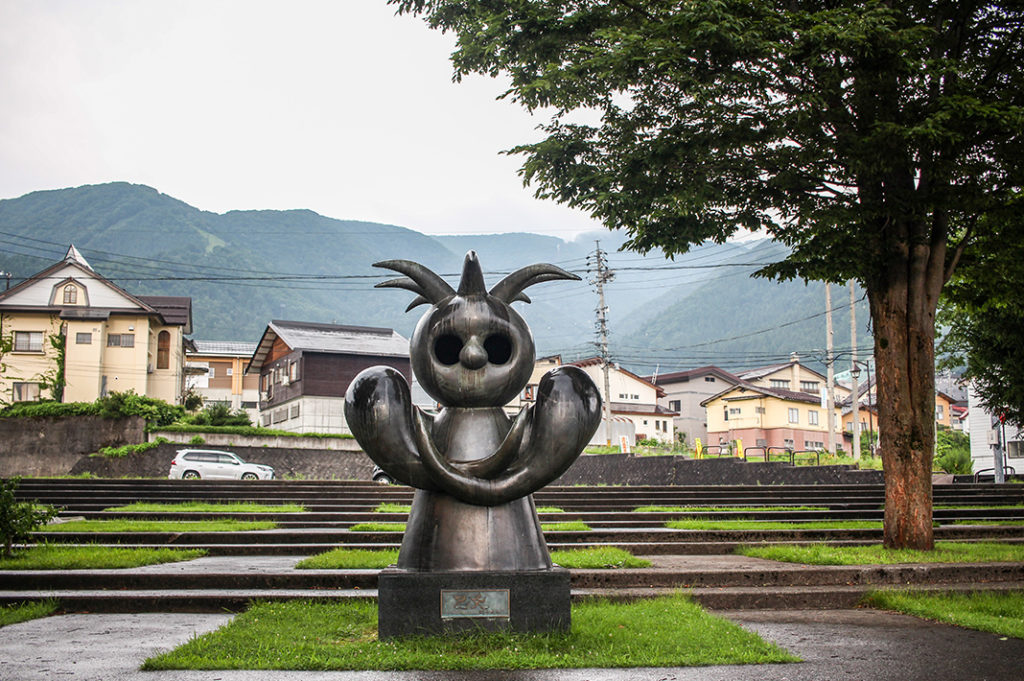
How to get to the Tarō Okamoto Memorial Museum
The Tarō Okamoto Memorial Museum is an eight minute walk from Omote-sando Station or a 20 minute walk from Shibuya Station.
For those who prefer the bus, you can access the museum via the “Aoyama Route” bus between Roppongi Hills and Akasaka Mitsuke Station, or bus #88 between Shibuya Station and Shimbashi Station.

Name: Tarō Okamoto Memorial Museum
Address: 6 Chome-1-19 Minamiaoyama, Minato City, Tokyo 107-0062
Open: 10:00-18:00 (final admission 17:30)
Admission: Adults ¥650, Elementary School Children ¥300. Discounts apply for groups over 15 people.
Website: here
Post by Japan Journeys.



